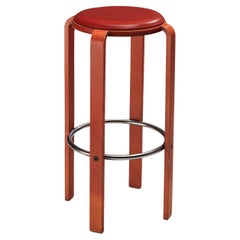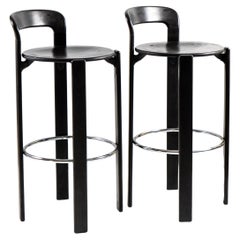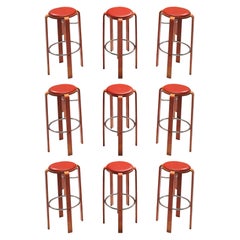Bruno Rey Barstool
Vintage 1970s Swiss Post-Modern Stools
Metal
Recent Sales
Vintage 1970s German Mid-Century Modern Stools
Chrome
Vintage 1970s Swiss Modern Stools
Aluminum
Vintage 1970s German Mid-Century Modern Stools
Chrome
Vintage 1970s Swiss Modern Stools
Aluminum
People Also Browsed
2010s Mexican Mid-Century Modern Dining Room Chairs
Ash
21st Century and Contemporary Brazilian Modern Floor Lamps
Cement, Steel
21st Century and Contemporary American Mid-Century Modern Chandeliers an...
Plaster
21st Century and Contemporary Brazilian Modern Music Stands
Oak, Walnut
Vintage 1960s Norwegian Scandinavian Modern Dining Room Chairs
Leather, Rosewood
2010s Dutch Modern Side Tables
Marble
Vintage 1970s Italian Mid-Century Modern Chandeliers and Pendants
Steel
2010s Italian Table Lamps
Fiberglass
Vintage 1960s Swedish Mid-Century Modern Sofas
Chrome
Vintage 1960s French Mid-Century Modern Dining Room Chairs
Pine
Antique 1740s English George II Blanket Chests
Oak
2010s Italian Modern Credenzas
Wood, Walnut
2010s Danish Brutalist Stools
Pine
Early 2000s Italian Mid-Century Modern Lounge Chairs
Steel
2010s Swedish Modern Sideboards
Elm, Burl
Mid-20th Century Brazilian Mid-Century Modern Armchairs
Iron
Bruno Rey Barstool For Sale on 1stDibs
How Much is a Bruno Rey Barstool?
Finding the Right Stools for You
Stools are versatile and a necessary addition to any living room, kitchen area or elsewhere in your home. A sofa or reliable lounge chair might nab all the credit, comfort-wise, but don’t discount the roles that good antique, new and vintage stools can play.
“Stools are jewels and statements in a space, and they can also be investment pieces,” says New York City designer Amy Lau, who adds that these seats provide an excellent choice for setting an interior’s general tone.
Stools, which are among the oldest forms of wooden furnishings, may also serve as decorative pieces, even if we’re talking about a stool that is far less sculptural than the gracefully curving molded plywood shells that make up Sōri Yanagi’s provocative Butterfly stool.
Fawn Galli, a New York interior designer, uses her stools in the same way you would use a throw pillow. “I normally buy several styles and move them around the home where needed,” she says.
Stools are smaller pieces of seating as compared to armchairs or dining chairs and can add depth as well as functionality to a space that you’ve set aside for entertaining. For a splash of color, consider the Stool 60, a pioneering work of bentwood by Finnish architect and furniture maker Alvar Aalto. It’s manufactured by Artek and comes in a variety of colored seats and finishes.
Barstools that date back to the 1970s are now more ubiquitous in kitchens. Vintage barstools have seen renewed interest, be they a meld of chrome and leather or transparent plastic, such as the Lucite and stainless-steel counter stool variety from Indiana-born furniture designer Charles Hollis Jones, who is renowned for his acrylic works. A cluster of barstools — perhaps a set of four brushed-aluminum counter stools by Emeco or Tubby Tube stools by Faye Toogood — can encourage merriment in the kitchen. If you’ve got the room for family and friends to congregate and enjoy cocktails where the cooking is done, consider matching your stools with a tall table.
Whether you need counter stools, drafting stools or another kind, explore an extensive range of antique, new and vintage stools on 1stDibs.


